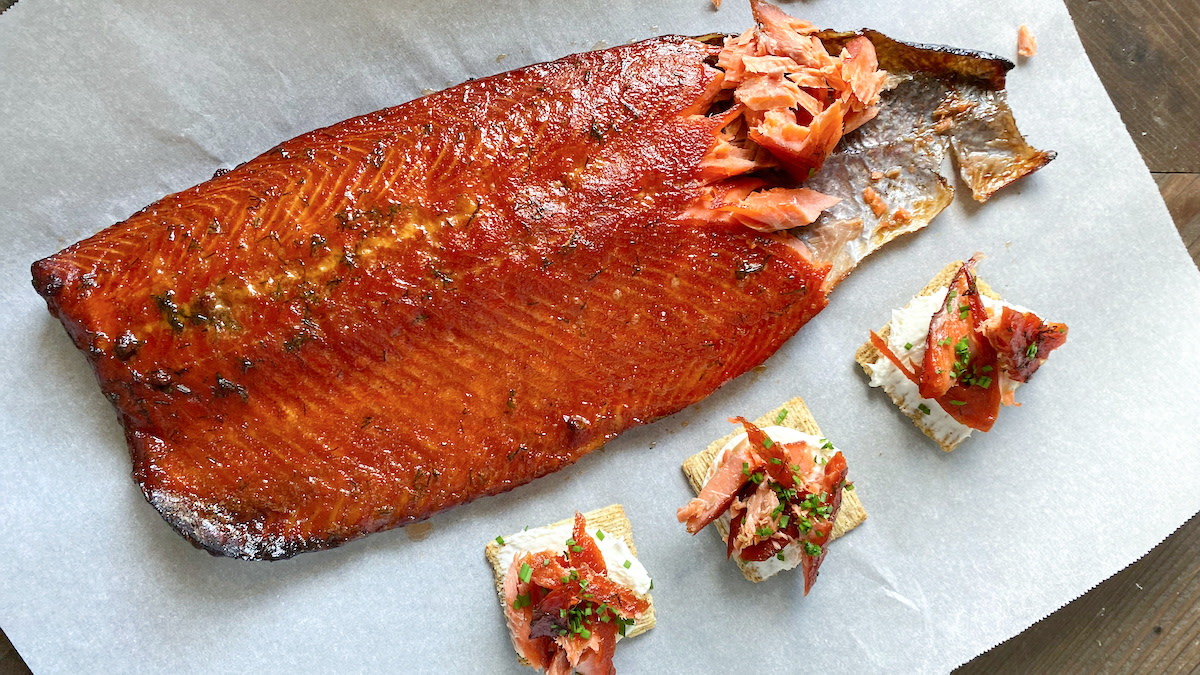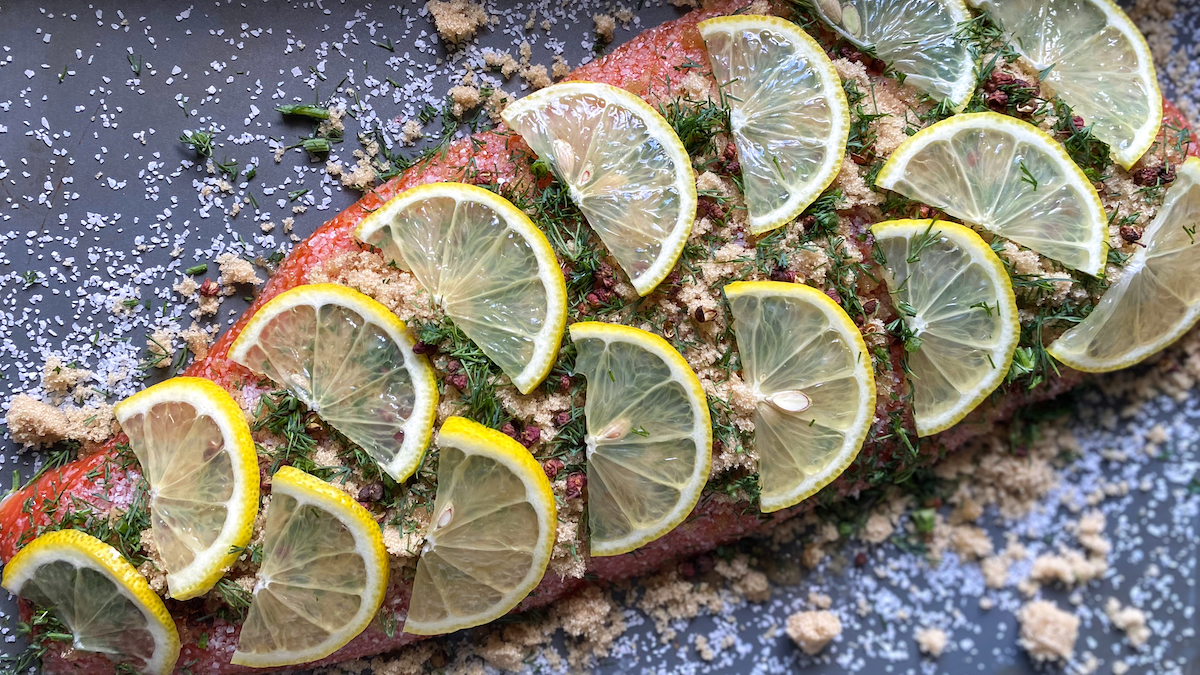
Smoking fish doesn't have to be fancy. From brining methods to cooking temperature, there are a ton of opinions for putting fish to smoke. Personally, I'm a hot-smoke guy who typically leans towards using a dry brine most of the time. But if I'm bulk fish-smoking an abundance of lake whitefish, I'll go with an overnight wet brine.
I cured the salmon that is pictured with a dry brine of light brown sugar, kosher salt, fresh dill, thinly sliced lemon, and peppercorns. I also expedited the curing process by vacuum sealing the intense flavors together, which boosts the salt’s ability to pull moisture from the fish and combine it with all of that flavorful goodness. A few hours at 200 to 225º in my standing smoker, and the results were fantastic.
Everyone has their own techniques, and this happens to be how I like to cure and smoke my fish. So, what are the other options like types of smokers, wood, seasonings, or the best fish to smoke? Let's take a quick walk through the how-to’s of prepare you for your next smoking excursion.

Something Salty, Something Sweet
First and foremost, let's talk salt. It's imperative that you use kosher salt such as Morton's or Diamond Crystal. Avoid iodized table salt at all costs. The additives in table salt will ruin your brine.
Be sure to include something sweet like brown sugar or pure maple syrup. This addition plays well with the fish and helps to caramelize the exterior during the smoking process. Going past the salt and sugar, your choice of seasonings is up to you and is where you can really begin to experiment. Classic combinations include peppercorns, juniper, fresh dill, and lemon or maple and bourbon.
Dry Brine vs. Wet Brine
Both the wet and dry brine methods work great for preparing fish to smoke. The main difference is how the brine is constructed and how the salt is incorporated.
By dry brining, you are pulling moisture from the fish and curing with the ingredients, effectively kick-starting the preservation process. In contrast, a wet brine soaks the fish in a seasoned salt solution to ensure that it retains moisture during the smoking process.
Cold Smoke vs. Hot Smoke
There are two types of smoking methods, cold and hot, which have everything to do with temperature, as the name of these techniques apparently imply. Cold smoking keeps the temperature very low, allowing for a long, slow smoke that cures the fish. Hot smoking works quicker at a higher temperature, effectively cooking the fish through. The results differ significantly, yet they are both outstanding in their own right. If you have purchased pre-sliced translucent smoked salmon from the store, that is the product of cold smoking.
There are many types of smokers and wood varieties in the world of smoking meats. I mainly use my standing propane smoker, but you can also use a pellet grill, charcoal, electric smoker, or even go all-natural over the fire. The wood you use is a personal preference and could include any variation of apple, cherry, maple, oak, alder, hickory, and so many more.
High-fat and oily fish species will give you the best results for smoking, but don't be afraid to try some more obscure species. It comes down to how you intend to use the fish. The options are endless, from simply served with crackers to fish cakes, pasta, salads, dips, and sauces.
How to Make a Dry Brine for Smoked Fish
Start by placing the fish in a plastic container with sides that allows the fillet to lay flat. Liberally coat the fish with kosher salt and brown sugar, about a 3 to 1 sugar to salt ratio.
Next, add fresh herbs, spices, and lemon slices. Cover and allow to cure overnight.
Alternatively, you can vacuum seal the fish with the curing ingredients to shorten the curing time to 4 to 6 hours. Make sure to wipe most of the brine away before smoking so the fish doesn't get too salty. From here, it can go straight to the smoker.
How to Make a Wet Brine for Smoked Fish
Use a 20 to 1 ratio of water-to-salt. Taste it, and if you don't find it salty enough, simply add more. Now you may add whatever flavors and aromatics you want to the brine. Bring the brine to a boil, reduce it to a light simmer and cook for 15 to 20 minutes to extract the flavors and then cool it down.
Once the brine is at room temperature, add it to a plastic container, then add the fish, making sure it remains submerged, and brine it overnight, or for at least 4 to 6 hours. It's ready for the smoker right out of the brine and lightly dried.
Note that for wet or dry brines, curing times will vary widely depending on the size and thickness of the fillet or cut of fish. A standard fillet of salmon will cure perfectly overnight. In contrast, smaller fish like stream trout may only take a few hours.






